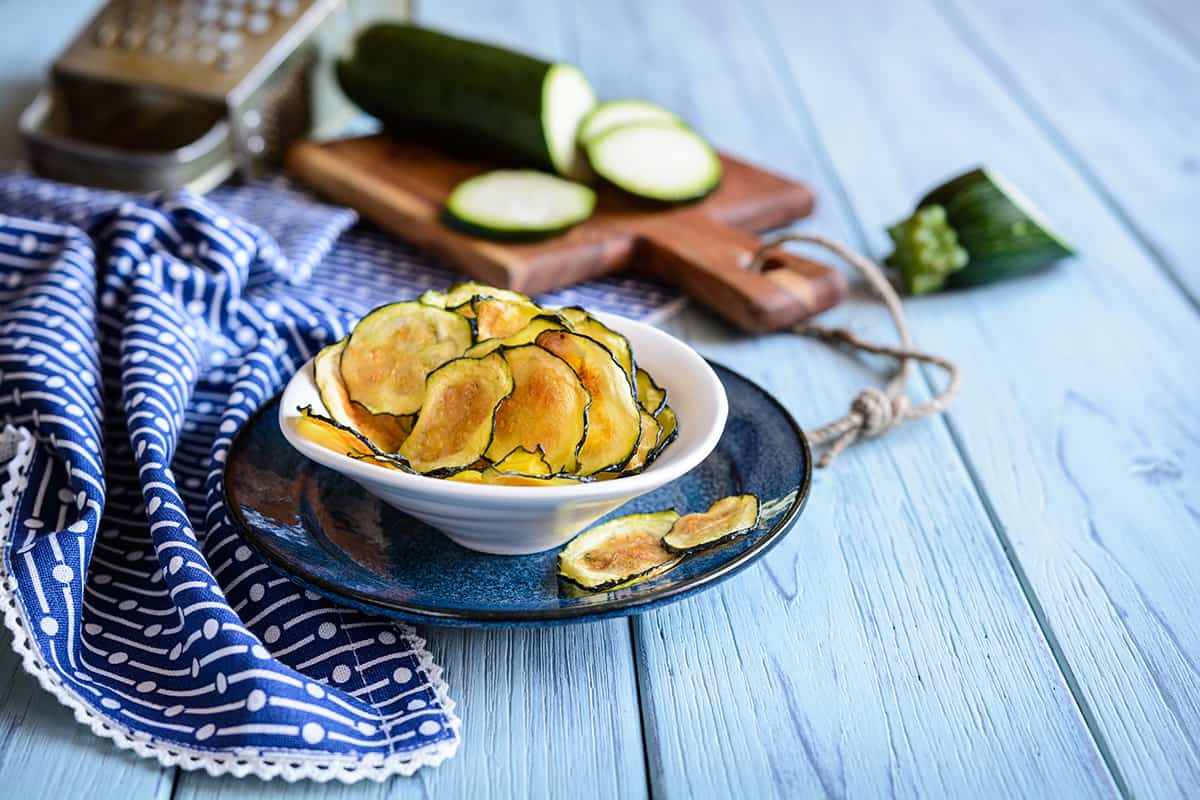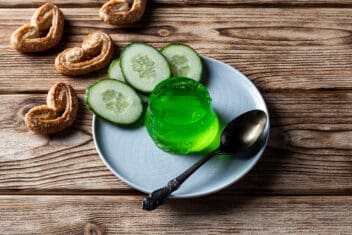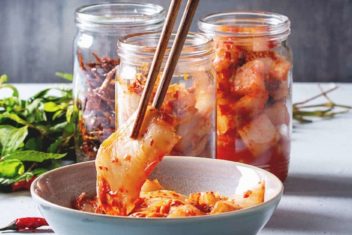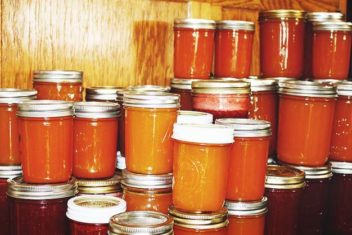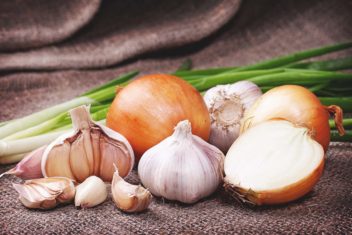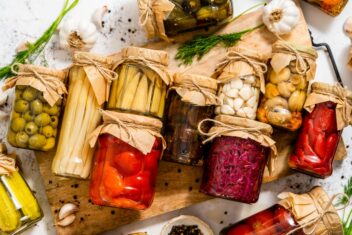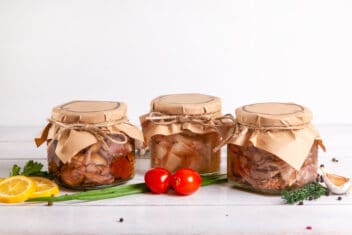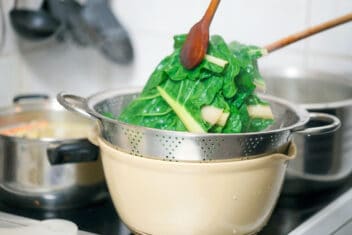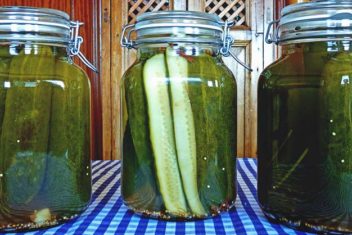Every summer, like clockwork, my neighbors set out a table beside their mailbox stacked with extra zucchini and a little sign; “free.” People occasionally take some, but the stack never seems to disappear until the first frost puts an end to the zucchini season. In the same situation? You need some tasty ways to preserve your zucchini.
Nothing encourages generosity among neighbors like zucchini. Every year, we put in one or two plants; every year we’re left with more squash than anyone can eat. I’ve seen zucchinis left at food banks, on porches, and handed out after church. I was offered “a few extra” zucchini and ended up with a five-gallon bucket of squashes. If you’re in a similar situation, I can help you process your extra zucchini.
1. Cold Storage
Zucchini is a squash, but unlike winter squashes, it doesn’t store well on its own. Zucchini rinds are thinner than those of winter squashes. They’re not designed to last for weeks in refrigerators or cellars. Even in cool temperatures, zucchini tends to disintegrate quickly.
After a week or two in cold storage, all your pretty zucchini will start molding. Save the cellar space for pumpkins and potatoes. It’s better to process zucchini right away.
If you do have to wait a week to process your summer squashes, store them in a cool, dark place. Make sure that the zucchinis aren’t touching each other either. You should also avoid storing zucchini with potatoes or onions.
2. Freezing
Once, overwhelmed with tomatoes and cucumbers, I tried freezing my extra zucchini. I grated them into quart-sized freezer bags and looked forward to a winter of easy-access zucchini. But when I pulled them out, the grated squash was mushy, wet, and practically useless. It was ok added to minestrone, but it was too wet to bake with and disintegrated quickly when cooked.
Zucchini just can’t hold up in the freezer like that unless it’s supported by other ingredients. Baked into breads or cooked into sauces, zucchini can freeze successfully.
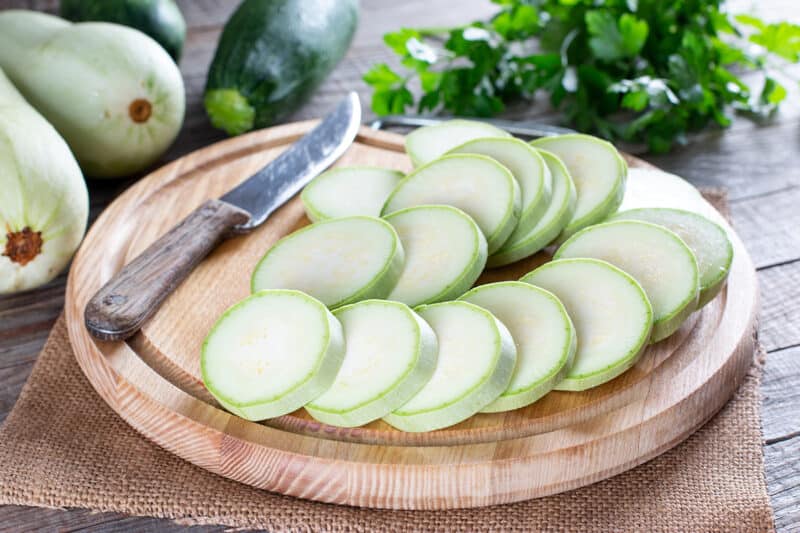
Your other option is to blanch and freeze slices. Wash your squash and then put it in a pot of boiling water for one minute. Then, transfer the slices to an ice bath to stop the cooking process. Lay the slices out on a baking sheet and put them in the freezer until the slices are firm. Now, you can put the slices into a sealable container or bag.
3. Cooking
Start working through your zucchini pile by cooking some of it. You might be tired of spiraled zucchini noodles and pasta primavera, but fortunately, there are other options. Add zucchini to that huge batch of tomato sauce you’re cooking down. The zucchini won’t be very noticeable, but it does add a depth of flavor to basic sauces.
Cooking zucchini into sauces and soups is an easy way to use up a squash or two. After cooking, you can either freeze or can the end product without worrying about pulling mushy zucchini out of the freezer. Plus, this method lets you preserve your zucchini in a way that won’t have you begging for something other than squash for dinner.
4. Zucchini Bread
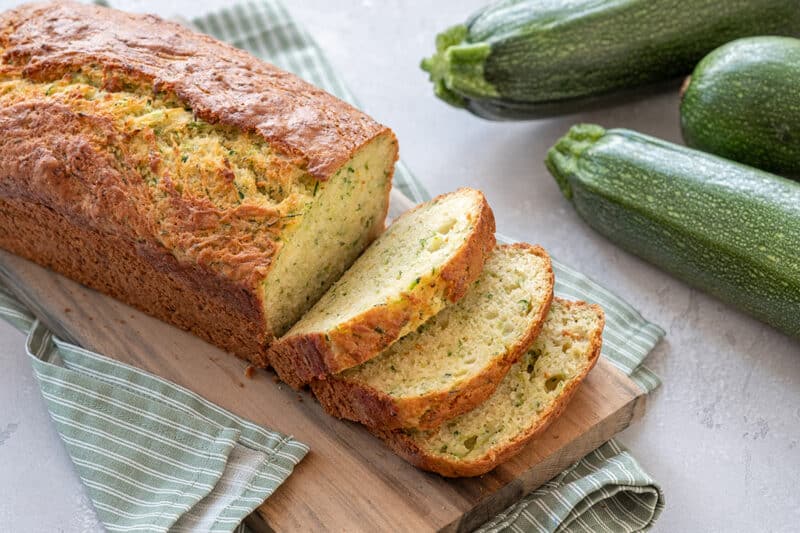
Cooking with zucchini can jump quickly into the realm of sweet and delicious. With the right recipe, you may even forget that zucchini is in the recipe at all – which is great after a summer full of ratatouille and garden shish-kabobs.
The most popular option is zucchini bread. If you’re still feeling neighborly and generous – bake little zucchini loaves for the whole neighborhood. Or freeze the loaves to use as Christmas gifts later. Zucchini bread works well in small gift baskets. Add a jar of crème fraiche or cream cheese, a jar of marmalade, and a tin of good tea to the mix. Your neighbors or coworkers will love you.
I like adding cardamom and ginger to my zucchini bread and serving it with smokey Lapsang Souchong tea.
5. Desserts
Adding grated zucchini to baked goods is a great way to work through your stash of squash. Zucchini bread, muffins, and cookies are great, but branch out a bit too. If you’ve never tried a zucchini chocolate cake give it a try. Trust me, the zucchini simply acts as a moistening agent. This cake is rich and delicious, with no hint of vegetable flavor. It also freezes well.
Baking zucchini into sweetbreads or cakes is a great way to preserve some of the harvest for winter. Baked into breads and cakes, zucchini can be frozen easily without losing any flavor or disintegrating into mush.
Of course, a freezer has only so much space to dedicate to zucchini. If your anything like me, you’d rather save freezer space for more exciting foods – that deer you’re finally going to get this year for example. Most of the zucchini ends up in the canning pot.
6. Pressure Canning
The best way to preserve a lot of zucchini is by canning it. If you have a pressure canner, can zucchini on its own or in an “End of the Season” batch of mixed vegetables (recipe below). Like most vegetables, zucchini isn’t acidic enough to be processed safely in a water bath canner without help. If you have a pressure canner, however, it’s easy to process zucchini alone or with other vegetables.
A shelf full of canned zucchini will open up an abundance of possibilities for wintertime meals. Pressure canned zucchini can be easily added into casseroles, soups, stews, and sauces long after your garden is blanketed with snow.
I like to approach canning zucchini from a few angles. That way, I have a wide variety of preserved zucchini to choose from – not just 35 pints of relish or mixed vegetable pickle. Think forward to what you’d like to see on your pantry shelves in January and can accordingly.
On its own, zucchini cans best by being raw packed into clean, hot jars. Add 1/2 teaspoon of salt to each pint, or 1 teaspoon to each quart. Then cover the squash with boiling water – leaving about 1/2 inch of headroom. Make sure the water covers the top of the squash.
Then, pressure process at 10 pounds. Pints should be processed for 25 minutes, while quarts need 30 minutes of processing.
7. End of Season Garden Mix
The End of Season vegetable mix is a great way to put by a base for winter stews. Mix chopped zucchini with carrots, onions, corn, beans, tomatoes, celery, etc. Almost any garden vegetable can be added to the mix. Combine two or more vegetables but try to avoid pairing vegetables that will quickly become mushy with hardier vegetables.
I like combining carrots, garlic, and zucchini into an easy mix for stews. Onions, tomatoes, and zucchini make a great base for sauces. You can also add herbs to the mix before processing. Putting the herbs in now allows the vegetable to really absorb the herbs, which brings a fuller flavor to winter stews.
This mix also allows for quicker processing during the busy summer months. Instead of cooking down sauces, or making a huge batch of soup to preserve, you can just throw extra vegetables into a mix and can it for later cooking.
Chop the vegetables into manageable sizes, cover with boiling water and cook for 10 minutes. Drain the vegetables but save the cooking water for packing the jars. Fill your jars with the cooked vegetables, add a 1/2 teaspoon of salt to each pint, and top with the hot cooking water. Leave 1/2 inch of headroom
In a pressure canner, process at 10 pounds for 60 minutes.
8. Boiling Water Bath
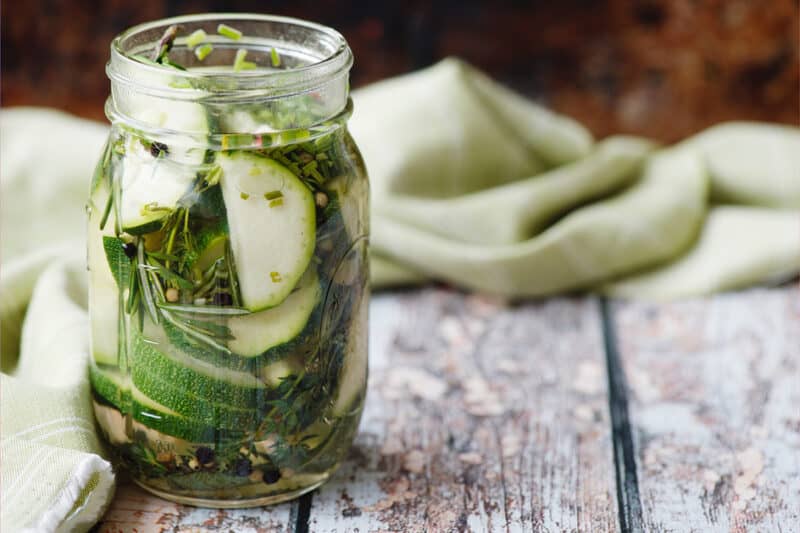
One of the easiest, and best-tasting ways to preserve zucchini is by pickling it. Pickled zucchini and zucchini relishes are easy to process in a boiling water bath. Zucchini takes well to pickling. It makes amazing bread and butter pickles, relishes, or even plain old dill pickles. Jars of pickled mixed vegetables are a simple, popular addition to wintertime dinners.
When you’re pickling zucchini, try to add something to retain crispness. In our house, we usually tuck a piece of horseradish leaf in each jar to keep the pickles crisp.
9. Easy Zucchini Pickle
Pickled zucchini is delicious on sandwiches or as an easy side dish.
A basic, pickled zucchini recipe is the easiest way to work your way through an abundance of summer squash. All you need is a pound of sliced zucchini, a bulb of garlic, 3/4 cup vinegar, 3/4 cup water, 1 tablespoon pickling salt, 1 teaspoon pickling spices, and 2 tablespoons dried dill.
Add everything but the zucchini, garlic, and dill to a pot. Bring to a boil. Then pack the zucchini slices into jars, add 1-2 cloves of peeled garlic to each jar, and sprinkle with dill. If you’re adding horseradish leaves to preserved crispness, add a piece of leaf to each jar. Then, pour hot brine over everything.
Seal the jars and process in a boiling water bath for 10 minutes.
10. Ferment
If you’re a fan of fermented foods like sauerkraut, fermenting is an excellent way to preserve your zucchini. If you’ve never fermented foods before, we have a guide that can walk you through the entire process. It’s incredibly easy and fermented foods are extremely healthy for you.
11. Dehydrate
Zucchini chips, anyone? Slice your squash into 1/4 inch rounds and pop them into a food dehydrator or an oven at the lowest setting possible and let those suckers dry out. You can put the dried pieces into a sealed container and they store well for weeks or even months, especially if you put them in the refrigerator.
